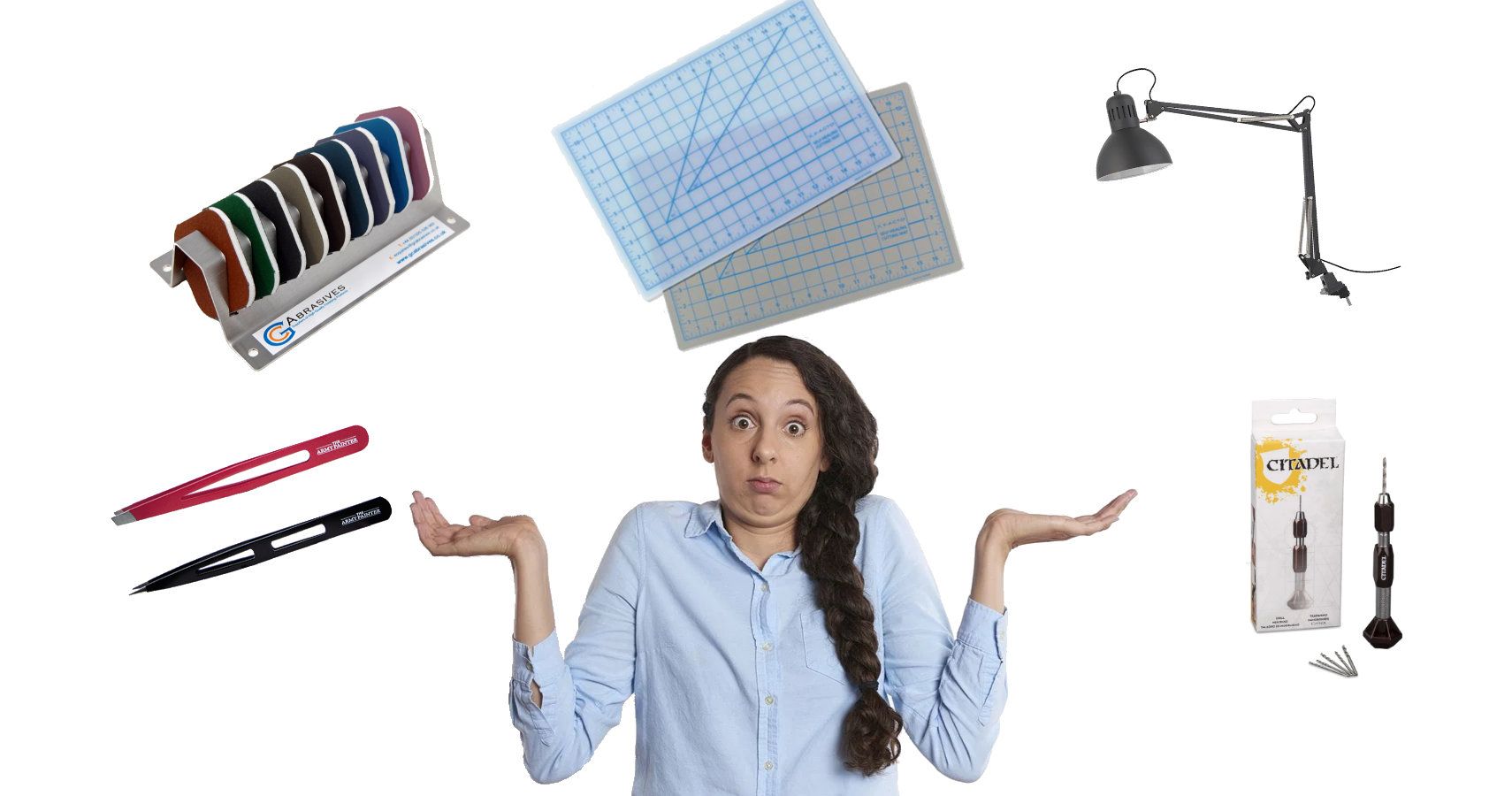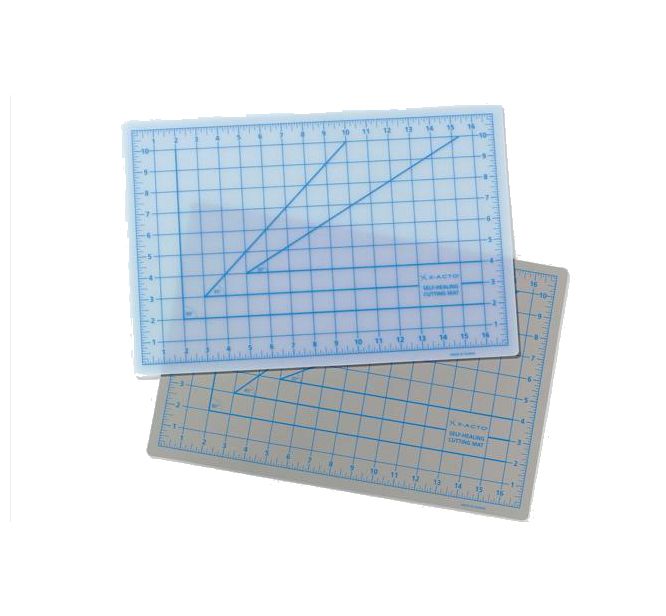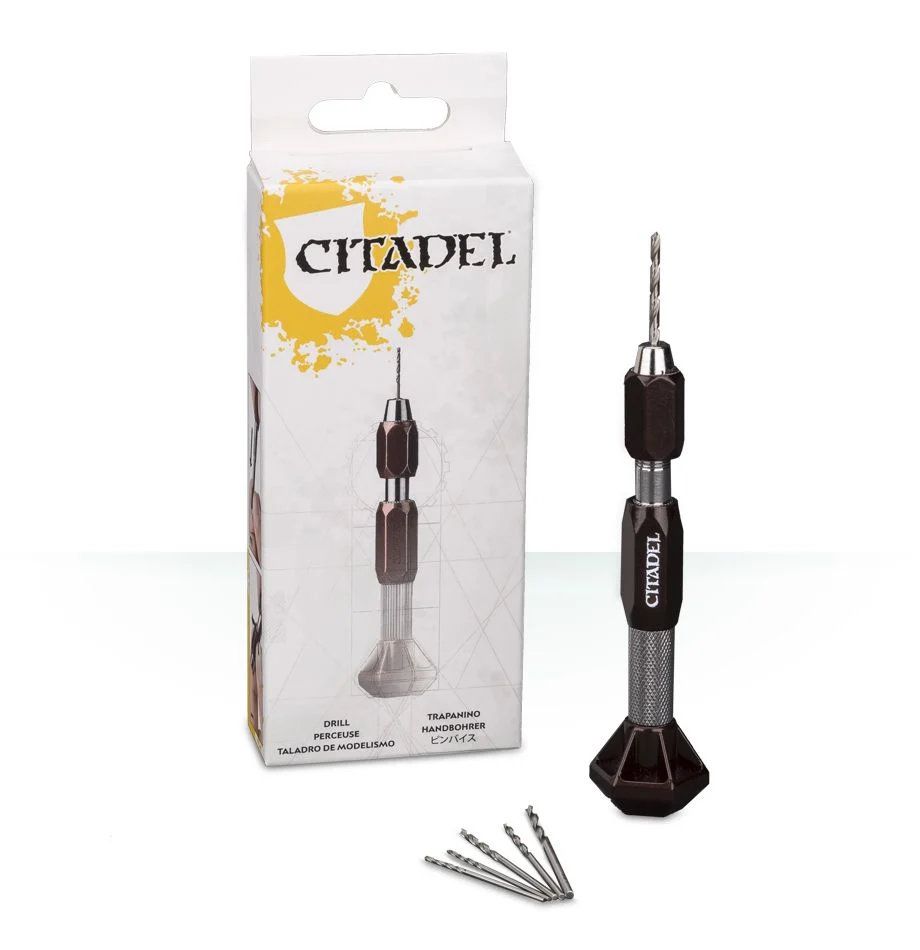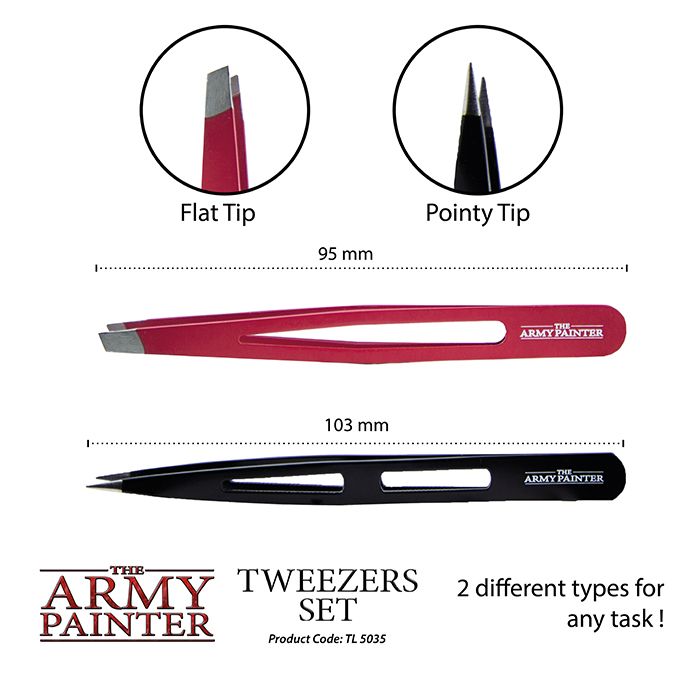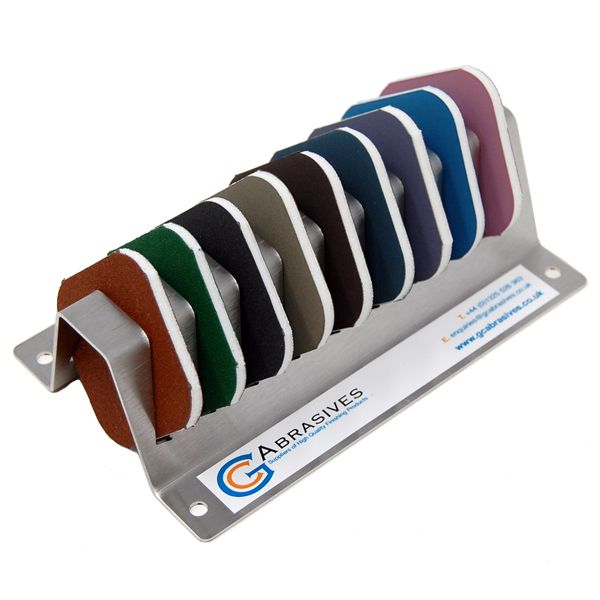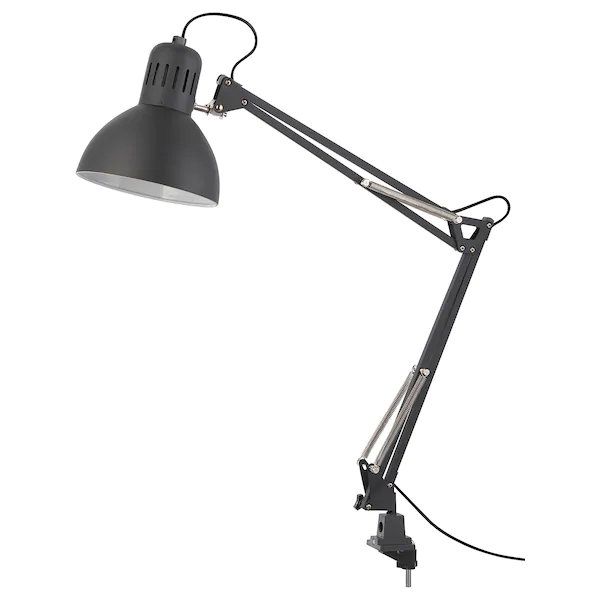In a previous tips and tricks, we looked at the essential beginner tools you need to start painting your Dungeons & Dragons and Warhammer minis. Today, it’s time for us to take a look at some of the intermediate tools that can help improve your painting experience.
Cutting Mat
To compliment a quality hobby knife, a good cutting mat will serve you well as it will not only protect your dining table (C’mon, who hasn’t taken over the family table with a mess of paint and miniatures at some point?), but it will help you achieve cleaner and safer cuts. Being able to use a flat surface brings added stability but make sure you get a decent self-healing mat. These have a thicker core to act as a blade stop and are covered with several thin layers of silicone that come together seamlessly after a cut is made. Get one as big as you can and if possible, double-sided with measurement markings that you can use to quickly make cuts of a given length.
Mini hand drill
A mini hand drill, also known as a pin vice or model drill, is a small hand tool that features a screwdriver handle takes fitted with a collet that takes small diameter drill bits. You then manually turn this against a surface to make small holes that can be used to pin parts together. Pinning involves drilling a small hole in the same place on two mating surfaces. Glue is applied to one surface and both holes. A short shaft of strong material matching the diameter of the holes is inserted into one of the holes, the mating surface is then lined up with the pin and pushed together to form a good bond. Pinning adds strength between joints and is especially handy with metal miniatures or larger models.
Tweezers
Have you noticed how small some of the parts and details are on minis these days? Getting things lined up, especially decals, can be a nightmare and this is where a good pair of tweezers come in. You don’t need anything special but a solid, well-built pair from the cosmetics aisle is a good starting point. If holding a pair of tweezers together proves difficult you can look into a pair of reverse action tweezers that are closed in their unpushed state. You can also use locking forceps or tweezers with elongated or curved blades for those extra hard-to-manage places.
Sanding Sticks, Pads, & Paper
We spoke about the importance of trimming or carving away mold lines last time, but sometimes even that isn’t good enough. High-grit wet sandpaper on a flat level surface is great for large parts that need a flat edge. Use a piece of glass and tape down the paper with some masking tape. You can make your own sanding tools by recycling items from around the home. An empty pill bottle will give you a curved sanding radius and Popsicle sticks can have paper glued to them to make rudimentary sanding sticks. Tamiya, amongst many others, has dedicated sticks of all manner of sizes and shapes but more often than not raiding your sister’s nail files will give you as good a result.
Lighting
Don’t paint in the dark, always have a good spot by the window where there is plenty of natural light. You will get a better view of your model and achieve consistent color accuracy. Even painting under the warm glow of incandescent light can affect your interpretation of color. Many painters opt for table-mounted boom-arm style lights fitted with a daylight bulb, typically anything over 6000K is fine. Good lighting will also help reduce eye strain allowing you to paint longer and meet the impossible deadlines you have to field your new army at the weekend. Look out for the Ikea Tertial when you next for meatballs, it’s not only cheap but is a fan favorite!
Once you have the basic tools, nothing will improve your painting other than practice, practice, and more practice. But anything you can do to improve your painting experience will make you want to come back time and time again. While you can do without these if you plan well enough, each serves a purpose at improving safety, your health, and preparation giving you the best chance at becoming a master painter. If nothing else, ensure you have good lighting and a good work area. Happy painting!

